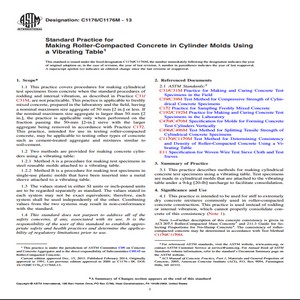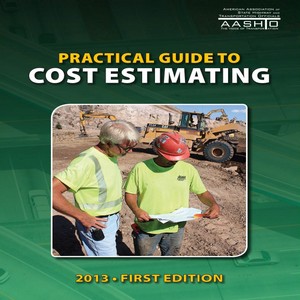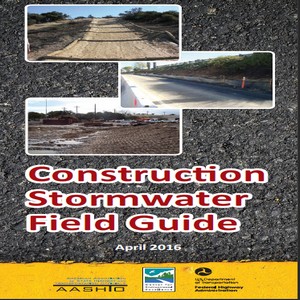ASTM C1176/C1176M − 13 Standard Practice for Making Roller-Compacted Concrete in Cylinder Molds Using a Vibrating Table
৳ 3,189.00
ASTM C1176/C1176M − 13 Standard Practice for Making Roller-Compacted Concrete in Cylinder Molds Using a Vibrating Table
ASTM C1176/C1176M − 13 Standard Practice for Making Roller-Compacted Concrete in Cylinder Molds Using a Vibrating Table
Scope
1.1 This practice covers procedures for making cylindrical test specimens from concrete when the standard procedures of rodding and internal vibration, as described in Practice C31/ C31M, are not practicable.
This practice is applicable to freshly mixed concrete, prepared in the laboratory and the field, having a nominal maximum size aggregate of 50 mm [2 in.] or less.
If the nominal maximum size aggregate is larger than 50 mm [2 in.], the practice is applicable only when performed on the fraction passing the 50-mm [2-in.] sieve with the larger aggregate being removed in accordance with Practice C172. This practice, intended for use in testing roller-compacted concrete, may be applicable to testing other types of concrete such as cement-treated aggregate and mixtures similar to soil-cement
ASTM C1176/C1176M − 13 Standard Practice for Making Roller-Compacted Concrete in Cylinder Molds Using a Vibrating Table
Significance and Use
4.1 This practice is intended to be used for stiff to extremely dry concrete mixtures commonly used in roller-compacted concrete construction.
This practice is used instead of rodding or internal vibration, which cannot properly consolidate concrete of this consistency (Note 1).





Reviews
There are no reviews yet.